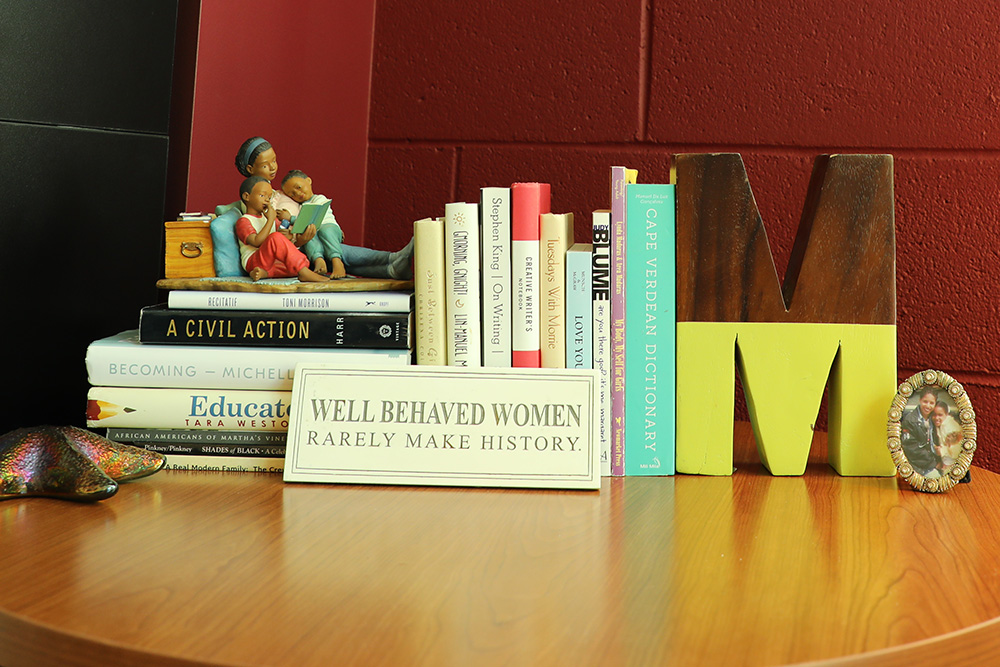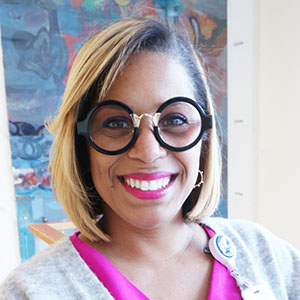
On My Bookshelf
Melissa Gomes, PhD, RN, PMHNP-BC, FNAP, FAAN
she/her
Associate Dean for Diversity, Equity, and Inclusion and an associate professor
IMPACTFUL BOOKS FROM YOUTH
Reading Are You There, God? It’s Me, Margaret in 5th grade, just as my body was starting to change, spoke volumes to the experience of growing up. “We must, we must, we must increase our busts!” is a beautiful line because that anticipation of growing up is something everybody experiences.
Growing up in a close-knit but insulated Cape Verdean community, I was surrounded by reminders of my ethnicity, but not necessarily socialized to Black American culture. Like other populations with diverse ancestry, we do not neatly fit into a single racial category. When I went away to college, and did a work study job in the library, my lens began to widen. I truly became an avid reader. I read Terri McMillan and J. California Cooper, authors who really spoke to Black female friendship. I read Malcolm X’s autobiography and bell hooks’s Ain't I a Woman?, books that exposed me to different perspectives, but ones I could relate to. And going to Howard University helped me understand my heritage within the Black diaspora.
BOOKS ROUTINELY ASSIGNED
For my Lifespan course, we’re reading Michelle Obama’s Becoming and Tara Westover’s Educated. Obama’s book describes her close-knit Chicago community where there was a lot of intergenerational influence. Educated, on the other hand, talks about the consequences of an insulated experience, but also how certain pivot points can change people’s trajectories—both important for students to see.
In my Culture and Health class, I use Toni Morrison’s “Recitatif,” a short story about two girls in foster care for which readers decide, based on contextual clues, each character’s race. It’s really an experiment. We discovered as a class that we based our suppositions on personal experiences rather than on stereotypes, which was eye-opening for all of us. The exercise reaffirmed something I often say: that we are more alike than we are different.
BOOKS AS GIFTS
Coffee with Girlfriends reminds me of my best friend growing up, and what it feels like to have personal conversations without embarrassment or a mask on. Tuesdays with Morrie is about why we should get past our initial judgements of others and realize there’s always a way to relate to others.
BOOKS READ WITH HER CHILDREN
Love You Forever, which I read with both my daughter and son, starts when a baby is born, then chronicles his toddler years and then goes throughout the different stages of life until the end, when the son, now a man, takes care of the mom. The book speaks volumes about mutual but unconditional love and support that we all need throughout life.
FOR FUN
Someday, somewhere, there is a book in me; I just don’t know what it wants to say yet, so I have a lot of how-to books, including Stephen King’s How to Write a Novel. My book will have something to do with seeing the sun, going through a storm, and coming through the other side; something that helps people know they’re not alone.
Gone Girl is another one of my favorites—what a beautiful plot twist. I also loved A Civil Action; Take My Hand, and The Other Half. These aren’t really light reads, though. Wow, maybe I’m not that much fun!
FAVORITE PLACE TO READ
The hammock under my house. You get the breeze, you can see the water, and the waves. Even on a hot day it’s cool under there. It’s a good place to go disappear.


